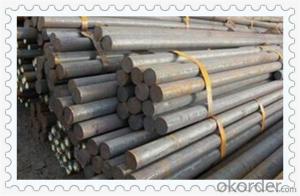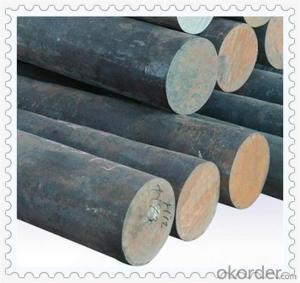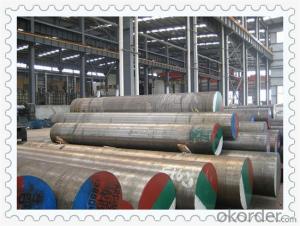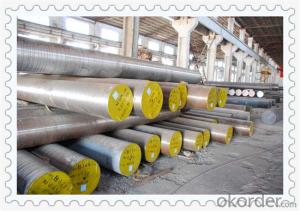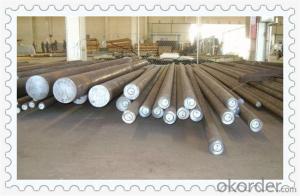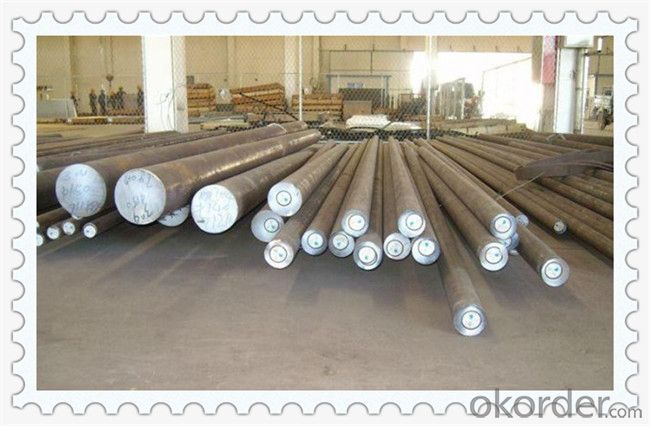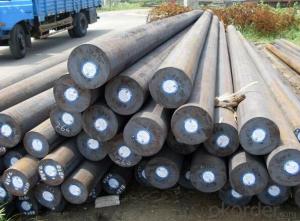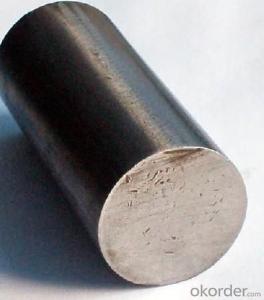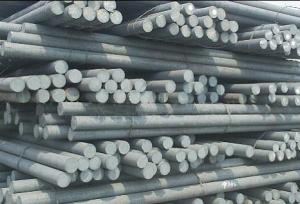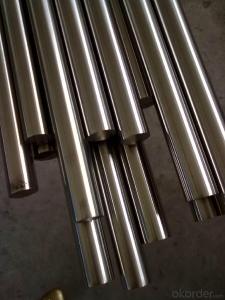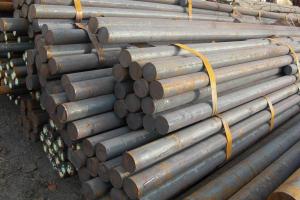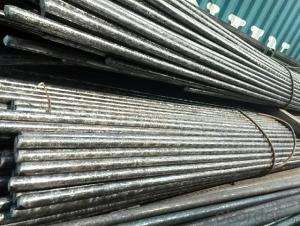1.2344 / SKD61 Hot Work Die Steel Round Bar
- Loading Port:
- China main port
- Payment Terms:
- TT OR LC
- Min Order Qty:
- 5 m.t.
- Supply Capability:
- 100000 m.t./month
OKorder Service Pledge
OKorder Financial Service
You Might Also Like
Specification
1.2344 / SKD61Hot Work Die Steel Round Bar
Comparative standards: | |||||||||||||
AISI/ASTM H13,X40CrMoV5-1, DIN 1.2344, JIS SKD61, BS BH13, NFA Z40CDV5 | |||||||||||||
Product Descriptions: | |||||||||||||
Chemical Composition(%) | |||||||||||||
C | Si | Mn | Cr | S | P | Mo | V | ||||||
0.32-0.45 | 0.80-1.25 | 0.20-0.60 | 4.75-5.50 | ≤0.02 | ≤0.03 | 1.10-1.75 | 0.80-1.20 | ||||||
Dimesions | |||||||||||||
Flat Bar | |||||||||||||
Cold Work Tool Steel | Thickness: 20~450mm;Width:200~600mm | Length:2000~6000mm | |||||||||||
Hot Work Tool Steel | Thickness: 20~650mm;Width:200~1200mm | ||||||||||||
Plastic Mold Steel | Thickness: 20~600mm;Width:200~1200mm | ||||||||||||
Round Bar | |||||||||||||
Cold Work Tool Steel | Dia:20~600mm | Length:2000~6000mm | |||||||||||
Hot Work Tool Steel | Dia:20~650mm | ||||||||||||
Plastic Mold Steel | Dia:20~650mm | ||||||||||||
Dimensions can be customized | |||||||||||||
Heat Treatment | |||||||||||||
Hardness | 60-64HRC | - | |||||||||||
Anneal | 840-860°C | ≤207-255HB | |||||||||||
Quenching | 980-1040°C | Air or oil cooling | |||||||||||
Tempering | 510-540°C | 60-64HRC, tempering twice | |||||||||||
- It is annealed before ex-factory, which ensure good metallographic structure, proper hardness and good workability. There is no need to anneal again. - But It must be re-annealed if reforged, as the original organization and performance are destroyed after reforged, and the forging stress increased. - Normally it will be annealed twice and the temperature of the second annealed is 20°C lower than the first one. | |||||||||||||

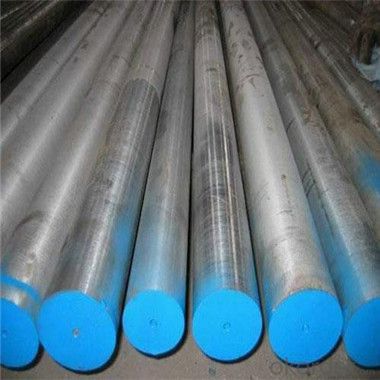


- Q: Can steel round bars be threaded or machined?
- Yes, steel round bars can be threaded or machined. Threading refers to the process of creating internal or external threads on the surface of a steel round bar, allowing it to be connected or fastened to other components. Machining, on the other hand, involves using various cutting tools and techniques to remove material from the steel round bar, shaping it into a desired form or size. Both threading and machining can be performed on steel round bars to meet specific requirements and applications, such as creating threaded rods, bolts, or custom-designed components.
- Q: Can steel round bars be used in corrosive environments?
- The suitability of steel round bars in corrosive environments depends on the specific type of steel and the severity of the corrosion. For instance, stainless steel round bars are well-known for their excellent resistance to corrosion and are widely used in corrosive environments like marine applications, chemical processing plants, and wastewater treatment facilities. These bars are typically alloyed with elements such as chromium and nickel, which create a protective layer on the surface of the steel, preventing corrosion. On the other hand, carbon steel round bars are more susceptible to corrosion and may not be appropriate for highly corrosive environments unless they are properly coated or treated. In such situations, it is crucial to seek advice from experts or engineers to select the right steel grade and take necessary precautions to ensure the durability and performance of steel round bars in corrosive environments.
- Q: How do you calculate the fatigue strength of a steel round bar?
- Various methods can be employed to calculate the fatigue strength of a steel round bar. For instance, the stress-life (S-N) curve approach or the strain-life (ε-N) curve approach can be utilized. The stress-life (S-N) curve approach entails plotting the stress amplitude (S) against the number of cycles to failure (N) on a log-log scale. By subjecting multiple specimens of the steel round bar to different stress levels and measuring the number of cycles to failure for each stress level, the S-N curve can be obtained. The fatigue strength of the steel round bar can then be determined by identifying the stress level at which the desired number of cycles to failure is achieved, commonly known as the endurance limit. On the other hand, the strain-life (ε-N) curve approach involves plotting the strain amplitude (ε) against the number of cycles to failure (N) on a log-log scale. Similar to the S-N curve approach, multiple specimens of the steel round bar are subjected to different strain levels, and the number of cycles to failure is recorded. By utilizing the strain-life curve, the fatigue strength can be determined by identifying the strain level corresponding to the desired number of cycles to failure. It should be emphasized that calculating the fatigue strength of a steel round bar necessitates conducting fatigue tests on representative specimens under controlled conditions. These tests involve subjecting the specimens to cyclic loading, typically in the form of tension-compression cycles, and recording the number of cycles to failure. The data obtained from these tests is then utilized to construct the S-N curve or the ε-N curve, which offers valuable insights into the fatigue behavior and strength of the steel round bar.
- Q: What are the different types of steel round bars used in the agricultural sector?
- In the agricultural sector, there are several types of steel round bars that are commonly used due to their strength, durability, and versatility. These bars play a crucial role in various agricultural applications. 1. Mild Steel Round Bars: Mild steel is one of the most widely used types of steel in the agricultural sector. It offers excellent strength and is relatively low in cost. Mild steel round bars are commonly used in the construction of agricultural equipment, such as plows, cultivators, and harrows. 2. Carbon Steel Round Bars: Carbon steel round bars are known for their high strength and toughness. They can withstand heavy loads and are ideal for applications that require superior durability. Carbon steel round bars are commonly used in the manufacturing of tractor parts, tillage tools, and other heavy-duty agricultural machinery. 3. Alloy Steel Round Bars: Alloy steel round bars are made by adding various alloying elements to steel, such as chromium, nickel, or molybdenum. These elements enhance the strength, hardness, and corrosion resistance of the steel. In the agricultural sector, alloy steel round bars are often used in the manufacturing of high-performance components, such as gears, axles, and shafts. 4. Stainless Steel Round Bars: Stainless steel round bars are highly resistant to corrosion and have excellent mechanical properties. They are commonly used in agricultural applications that require resistance to moisture, chemicals, and harsh environments. Stainless steel round bars are often utilized in the manufacturing of dairy equipment, storage tanks, and irrigation systems. 5. Tool Steel Round Bars: Tool steel round bars are specifically designed to withstand high temperatures, abrasion, and impact. They are used in agricultural applications that involve cutting, shaping, or drilling. Tool steel round bars are commonly used in the production of blades, cutting tools, and machinery parts for crop harvesting and processing. It is important to consider the specific requirements and conditions of each agricultural application when selecting the appropriate type of steel round bar. By choosing the right steel round bar, farmers and agricultural professionals can ensure the reliability and longevity of their equipment and machinery.
- Q: Can steel round bars be used in the production of bearings?
- No, steel round bars are not typically used in the production of bearings. Bearings are usually made from specialized materials such as stainless steel, bearing steel, or other alloys specifically designed for their load-bearing properties and ability to reduce friction.
- Q: Can steel round bars be used for making suspension springs?
- Yes, steel round bars can be used for making suspension springs. Steel is a commonly used material for suspension springs due to its high strength and durability. The round bars can be forged or shaped into the desired spring shape and then heat-treated to achieve the desired spring characteristics. Additionally, steel round bars can be easily machined and drilled to accommodate different suspension systems and components. However, it is important to consider the specific requirements and load capacity of the suspension system to ensure that the chosen steel round bars are suitable for the intended application.
- Q: How do steel round bars compare to brass round bars?
- Steel round bars and brass round bars have different properties and characteristics. Steel is known for its strength and durability, making it suitable for applications that require a high level of toughness. On the other hand, brass is valued for its corrosion resistance and aesthetic appeal. While steel round bars are often used in construction, manufacturing, and engineering projects, brass round bars are commonly used in decorative and architectural applications. Ultimately, the choice between steel and brass round bars depends on the specific requirements of the project at hand.
- Q: How do you calculate the bending stress in a steel round bar?
- The bending stress in a steel round bar can be calculated using the formula: Bending Stress = (Moment * Radius) / (Section Modulus). The moment is calculated by multiplying the applied force by the distance from the force to the center of the bar. The radius is the radius of the round bar, and the section modulus is a property of the bar's cross-sectional shape that indicates its resistance to bending.
- Q: What are the maximum allowable stresses for steel round bars?
- The maximum allowable stresses for steel round bars depend on various factors such as the grade of steel, the type of loading, and the design code being followed. In general, the maximum allowable stress for steel round bars is determined by the yield strength of the steel. The yield strength is the stress at which permanent deformation or yielding of the material occurs. Different grades of steel have different yield strengths. For example, mild steel typically has a yield strength of around 250 MPa (megapascals), while high-strength low-alloy (HSLA) steel can have a yield strength of up to 550 MPa. To determine the maximum allowable stress, typically a safety factor is applied to the yield strength. This safety factor takes into account uncertainties in material properties, loadings, and potential variations in manufacturing processes. The safety factor can vary depending on the application and design code being followed. For example, in structural steel design, the American Institute of Steel Construction (AISC) specifies a safety factor of 1.67 for the yield strength. This means that the maximum allowable stress would be the yield strength divided by 1.67. It is important to consult relevant design codes, standards, or engineering specifications for specific applications to determine the appropriate maximum allowable stresses for steel round bars.
- Q: How do steel round bars perform under impact or shock loading?
- Steel round bars generally perform well under impact or shock loading due to their high strength and toughness. The inherent properties of steel, such as its ability to absorb and distribute energy, make it highly resistant to deformation or failure when subjected to sudden forces or impacts. Additionally, the uniformity and reliability of steel's microstructure contribute to its consistent performance and durability in such loading conditions.
Send your message to us
1.2344 / SKD61 Hot Work Die Steel Round Bar
- Loading Port:
- China main port
- Payment Terms:
- TT OR LC
- Min Order Qty:
- 5 m.t.
- Supply Capability:
- 100000 m.t./month
OKorder Service Pledge
OKorder Financial Service
Similar products
Hot products
Hot Searches
Related keywords
